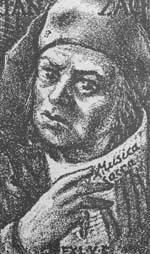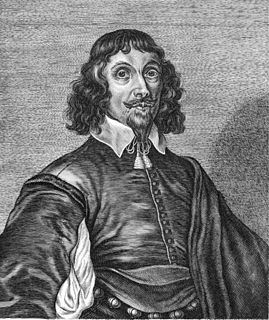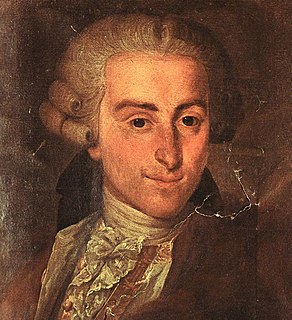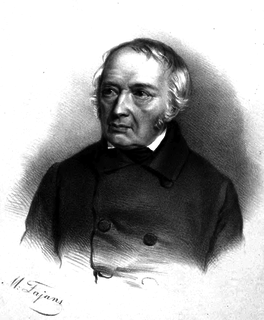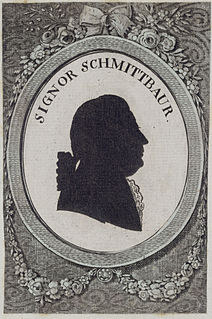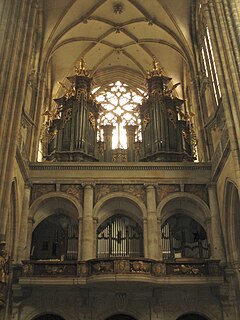Georg Robert von Pasterwitz (7 June 1730 – 26 January 1803) was an Austrian composer and teacher. He was born in Bierhütten, near Passau. First educated at Niederaltaich, he entered the Benedictine monastery in Kremsmünster in 1749. He then enrolled at the University of Salzburg, studying theology, law and mathematics. It was during this time that he met Johann Ernst Eberlin, who became his music teacher. Pasterwitz completed his studies in 1759 and soon started teaching philosophy at the monastery's Ritterakademie, eventually rising to teach courses in mathematics, physics, economics, and political science; since about 1755 he was also active as composer, producing stage works for the monastery almost every year.

Austria, officially the Republic of Austria, is a country in Central Europe comprising 9 federated states. Its capital, largest city and one of nine states is Vienna. Austria has an area of 83,879 km2 (32,386 sq mi), a population of nearly 9 million people and a nominal GDP of $477 billion. It is bordered by the Czech Republic and Germany to the north, Hungary and Slovakia to the east, Slovenia and Italy to the south, and Switzerland and Liechtenstein to the west. The terrain is highly mountainous, lying within the Alps; only 32% of the country is below 500 m (1,640 ft), and its highest point is 3,798 m (12,461 ft). The majority of the population speaks local Bavarian dialects as their native language, and German in its standard form is the country's official language. Other regional languages are Hungarian, Burgenland Croatian, and Slovene.

Passau is a town in Lower Bavaria, Germany, also known as the Dreiflüssestadt because the Danube is joined there by the Inn from the south and the Ilz from the north.
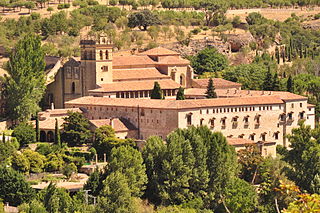
A monastery is a building or complex of buildings comprising the domestic quarters and workplaces of monastics, monks or nuns, whether living in communities or alone (hermits). A monastery generally includes a place reserved for prayer which may be a chapel, church, or temple, and may also serve as an oratory.
Contents
Between 1767 and 1783 Pasterwitz served as the monastery's choir director. Due to reforms started by Joseph II, he had to give up some of his duties and became instead the monastery's treasurer and eventually official representative, when it was threatened with dissolution in 1785. Pasterwitz died in 1803 in Kremsmünster, having served as dean of the Upper School there until 1801. Pasterwitz's surviving oeuvre comprises some 500 works, mostly liturgical pieces and dramatic works for the church. He composed a large number of short contrapuntal pieces for keyboard: 324 were published between 1790 and 1803, and were the only works published during the composer's lifetime. They show him as a competent master of both counterpoint and the keyboard. For the monastery, Pasterwitz regularly composed dramas and dozens of liturgical pieces: masses, offertories, vespers, etc.

Joseph II was Holy Roman Emperor from August 1765 and sole ruler of the Habsburg lands from November 1780 until his death. He was the eldest son of Empress Maria Theresa and her husband, Emperor Francis I, and the brother of Marie Antoinette. He was thus the first ruler in the Austrian dominions of the House of Lorraine, styled Habsburg-Lorraine. Joseph was a proponent of enlightened absolutism; however, his commitment to modernizing reforms subsequently engendered significant opposition, which resulted in failure to fully implement his programmes. He has been ranked, with Catherine the Great of Russia and Frederick the Great of Prussia, as one of the three great Enlightenment monarchs. His policies are now known as Josephinism. He died with no sons and was succeeded by his younger brother, Leopold II.

In music, counterpoint is the relationship between voices that are harmonically interdependent (polyphony) yet independent in rhythm and contour. It has been most commonly identified in the European classical tradition, strongly developing during the Renaissance and in much of the common practice period, especially in the Baroque. The term originates from the Latin punctus contra punctum meaning "point against point".

